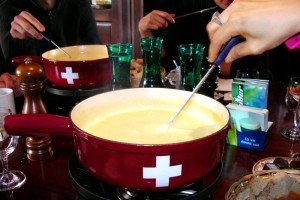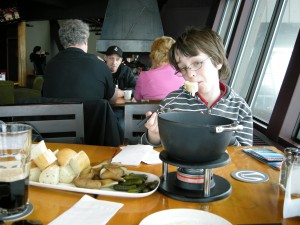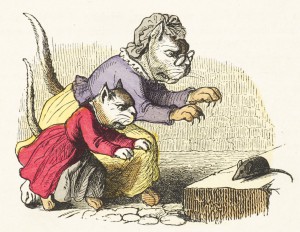Our grand-daughter has already made several serious career choices for when she grows up.
It began as being a painter / artist, as everyone praised her early Picasso-style drawings as being produced by a prodigy of extraordinary talent.
This quickly faded, and, liking cats and dogs, a vet became her second profession of choice. This has recently been dropped as she feels she could handle the warm furry outsides of animals, but the squishy liquid insides are a cause of concern.
When she discovered the self-scanning gizmo at the Migros she wanted to devote her life to shopping there, or, even better, becoming a scanning specialist.
Her latest stage brings with it the wish to become a little-kids primary school teacher so she can go back in time and have a school-free Wednesday.
This has resulted in several recent school-related conversations, with some surprising results.
When quizzed about her favorite day at school, Tuesday was craftily mentioned. This just happens to be the day that she comes here for lunch (of either macaroni and cheese or hamburgers) and is the envy of her entire school class who all march off to the faded lettuce and refried polenta of cuisine scolaire.
However, the absolute day of choice is Friday, due to Conséquences Agréeable. I had first thought this was some sort of a board game like Monopoly or Diplomacy or Labyrinth teaching the young blossoming minds the beauty of a morally-ordered world.
It turns out to be much more personal and devious. As each school week wears on, the thumb tack under your name moves from green, through yellow and orange into the red depending on your behavioural errors. If, by Friday afternoon, you are still in the green or yellow, you can spend your time doing nothing—laughing, giggling, whispering. This state of affairs is called “agreeable consequences.” If you have messed up in a possible multitude of ways (including faults of your parents forgetting to sign a report card, for instance) your thumb tack marches relentlessly at each error one step closer to the red.

If you are in the red field by Friday, you do not enjoy “agreeable consequences” but their opposite – dire consequences – work: dastardly multiplication tables, writing out lines, French dictation and correction. This is, of course, an 8-year-old’s nightmare which can–among the very best students–lead to precocious parental signature forgery.
This little piece of elementary psychology is only introduced in the 5th year of primary school (the year when Wednesday morning classes are begun) by the very sharpest of teachers. I like to think that our grand-daughter longs for a purer and simpler time of the truly agreeable 4-day week of her earlier school years.
And I am sure that her smug, selfish, lazy happiness created through the misfortune of others is an entirely unforeseen by-product of Friday afternoon’s “agreeable consequences.”









